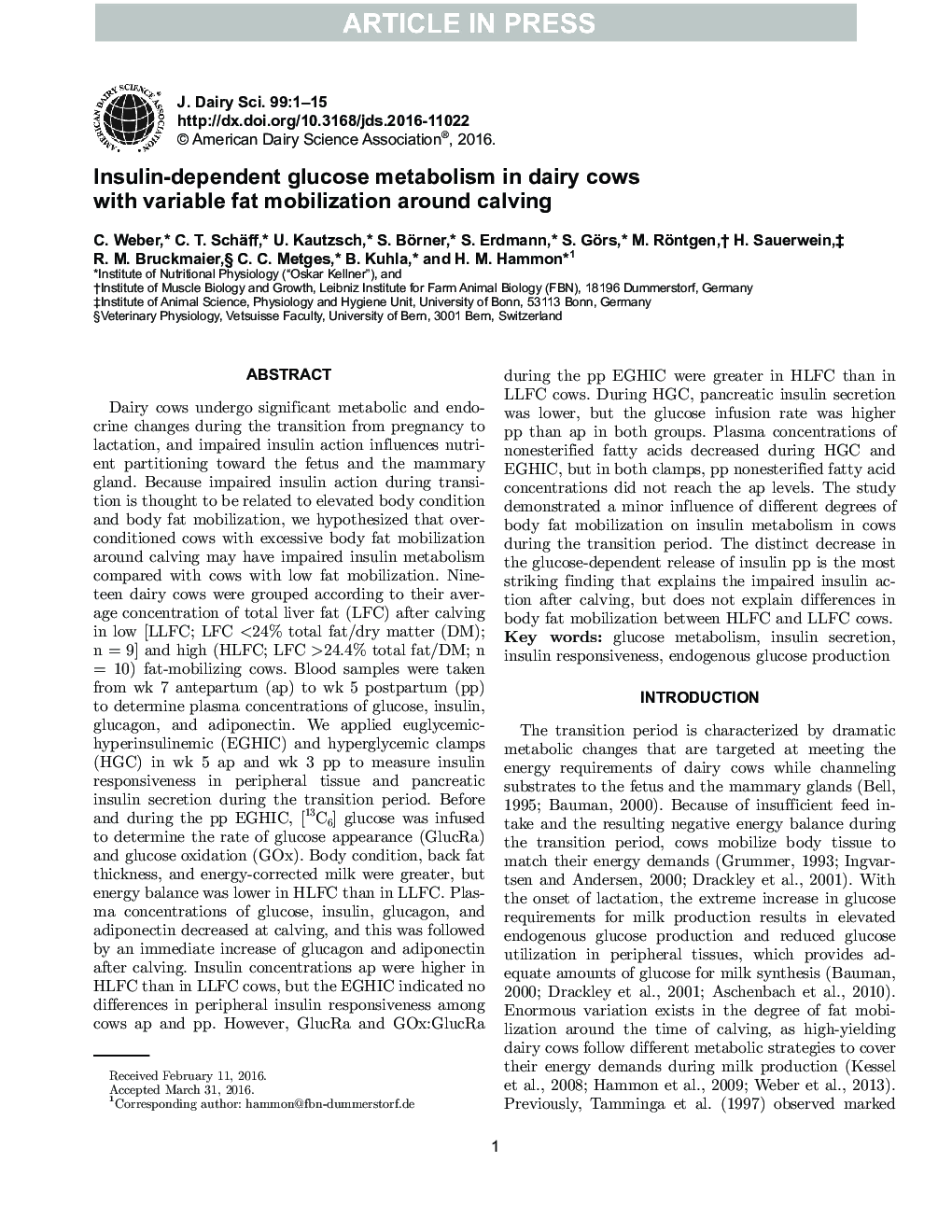| Article ID | Journal | Published Year | Pages | File Type |
|---|---|---|---|---|
| 10973187 | Journal of Dairy Science | 2016 | 15 Pages |
Abstract
Dairy cows undergo significant metabolic and endocrine changes during the transition from pregnancy to lactation, and impaired insulin action influences nutrient partitioning toward the fetus and the mammary gland. Because impaired insulin action during transition is thought to be related to elevated body condition and body fat mobilization, we hypothesized that over-conditioned cows with excessive body fat mobilization around calving may have impaired insulin metabolism compared with cows with low fat mobilization. Nineteen dairy cows were grouped according to their average concentration of total liver fat (LFC) after calving in low [LLFC; LFC <24% total fat/dry matter (DM); n = 9] and high (HLFC; LFC >24.4% total fat/DM; n = 10) fat-mobilizing cows. Blood samples were taken from wk 7 antepartum (ap) to wk 5 postpartum (pp) to determine plasma concentrations of glucose, insulin, glucagon, and adiponectin. We applied euglycemic-hyperinsulinemic (EGHIC) and hyperglycemic clamps (HGC) in wk 5 ap and wk 3 pp to measure insulin responsiveness in peripheral tissue and pancreatic insulin secretion during the transition period. Before and during the pp EGHIC, [13C6] glucose was infused to determine the rate of glucose appearance (GlucRa) and glucose oxidation (GOx). Body condition, back fat thickness, and energy-corrected milk were greater, but energy balance was lower in HLFC than in LLFC. Plasma concentrations of glucose, insulin, glucagon, and adiponectin decreased at calving, and this was followed by an immediate increase of glucagon and adiponectin after calving. Insulin concentrations ap were higher in HLFC than in LLFC cows, but the EGHIC indicated no differences in peripheral insulin responsiveness among cows ap and pp. However, GlucRa and GOx:GlucRa during the pp EGHIC were greater in HLFC than in LLFC cows. During HGC, pancreatic insulin secretion was lower, but the glucose infusion rate was higher pp than ap in both groups. Plasma concentrations of nonesterified fatty acids decreased during HGC and EGHIC, but in both clamps, pp nonesterified fatty acid concentrations did not reach the ap levels. The study demonstrated a minor influence of different degrees of body fat mobilization on insulin metabolism in cows during the transition period. The distinct decrease in the glucose-dependent release of insulin pp is the most striking finding that explains the impaired insulin action after calving, but does not explain differences in body fat mobilization between HLFC and LLFC cows.
Related Topics
Life Sciences
Agricultural and Biological Sciences
Animal Science and Zoology
Authors
C. Weber, C.T. Schäff, U. Kautzsch, S. Börner, S. Erdmann, S. Görs, M. Röntgen, H. Sauerwein, R.M. Bruckmaier, C.C. Metges, B. Kuhla, H.M. Hammon,
